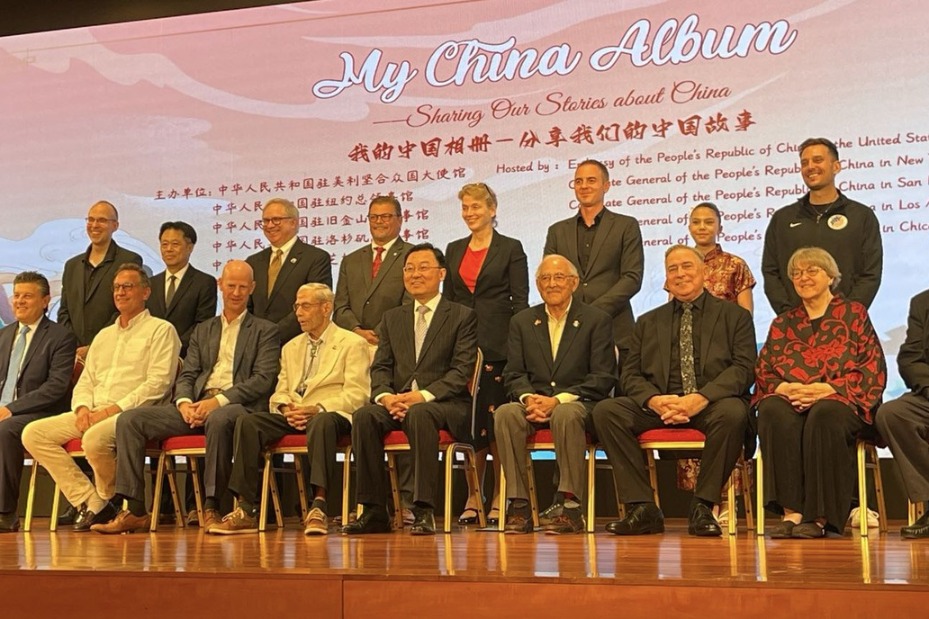Toward a new post-pandemic world order
By Eiichi Shindo | China Daily | Updated: 2020-05-07 07:20

The world is facing a common threat, the threat of the novel coronavirus. The virus has almost paralyzed society and brought the global economy to a standstill. And while economists are predicting the economic impact of the novel coronavirus pandemic would be far more than that of the 2008 global financial crisis, historians have begun talking about the Justinian Plague in the 6th century and the Black Death in the 14th century, which many say started the decline of the Eastern Roman (or Byzantine) Empire. This period, the 14th and 15th centuries, has been brilliantly captured by Dutch historian Johan Huizinga in his seminal book, The Autumn of the Middle Ages.
So what do we need to do to defeat the virus, the common enemy of humankind?
To overcome a common enemy, we first need to build a common front. But instead of doing that, the White House is pointing the finger at Beijing, apparently to hide its own failure to control the spread of the virus in the United States.
Yet this is not the time to look for scapegoats but to establish a global alliance to fight the virus, and for that, we need to first devise a feasible strategy. Thanks to the coordination efforts of the Belt and Road Japan Research Center, we-a group of Japanese scholars and journalists-put forward three strategies that the world, especially the Asia-Pacific region, should follow to overcome the impact of the pandemic.
First, the global supply chains in the region should be restored, by "reconstructing" the digital socio-industrial network for regional cooperation and remolding advanced digital information technology.
In the Asia-Pacific, the three leading East Asian powers, China, Japan and the Republic of Korea, should begin building the common front and then help incorporate it into the Regional Comprehensive Economic Partnership framework, which also includes the 10 members of the Association of Southeast Asian Nations, and Australia and New Zealand.
Second, apart from the national level, policy coordination also needs to be established at major local and city government levels, including inter-city networking along the extended platforms of the Belt and Road. This inter-city network should focus on strengthening regional cooperation on medical science and healthcare, as well as on environmental protection and green economy.
Third, the focus should also be on socio-economic security, not just on national security. Traditional Western security policy focuses on forming alliances, running huge surveillance networks and building a powerful military to promote Western-style democracy. By contrast, the post-pandemic security policy should be based on partnerships aimed at promoting regional socio-economic cooperation on health, medical care, energy and environmental protection.
The hegemonic preponderance of powers should be replaced by cooperation among major powers. The win-lose strategic game against potential enemies should give way to win-win multilateral socio-economic cooperation, particularly among countries in the same region.
History tells us that following the 1918 influenza pandemic, the world order began tilting from Britain toward the US.
And the fact that an Asian Development Bank report, issued on April 3, says the Asian region-comprising 34 countries and regions-will witness a V-shape recovery in national income, led by China whose GDP growth will increase from 2.3 percent in 2020 to 7.3 percent in 2021 shows which way the world order could move.
In fact, the "new normal" could be China, preferably in cooperation with Japan, the ROK and ASEAN member states, Singapore, Malaysia and Indonesia in particular, helping build a new Asia-wide cooperation network of cities, regions and enterprises.
As such, the post-pandemic world could see the emergence of a new world order.
The author is professor emeritus at the Tsukuba National University, Japan, and director-general of the Belt and Road Japan Research Center.
The views don't necessarily reflect those of China Daily.
























